What is one thing or one purchase that gardeners made that has given the biggest reward? Maybe it’s a simple task that’s improved yields, a tool that has made gardening work easier, or a simple idea that gives you a huge variety of plants to grow. As it turns out, some of the best ideas actually cost the least.
Here are 18 surprising – and often easy – ways to take your garden to the next level.
Jump to:
- Join Forces with Other Gardeners
- Experiment with Plants and Gardening Methods
- Mulch! Mulch!! Mulch!!!
- Get Wood Chips from Local Tree Services
- Use Mulch and Compost from Landfills or Nurseries
- DIY Compost!
- Use Deep Mulching to Reset Your Garden
- Use Quality Tools
- Set Up a Good Watering System in Your Garden
- Add a Small Water Feature for Wildlife
- Read All About It
- Take Local Classes About Gardening
- Seek Out Cheap and Free Plants and Supplies
- Grow Perennials Instead of Annuals
- Start Perennials from Seed
- Become Skilled in the Ways of Plant Propagation
- Choose Self-Seeding Annuals
- Buy Heirloom Seeds
- Look for Free Plants and Materials Online
- Conclusion
Join Forces with Other Gardeners
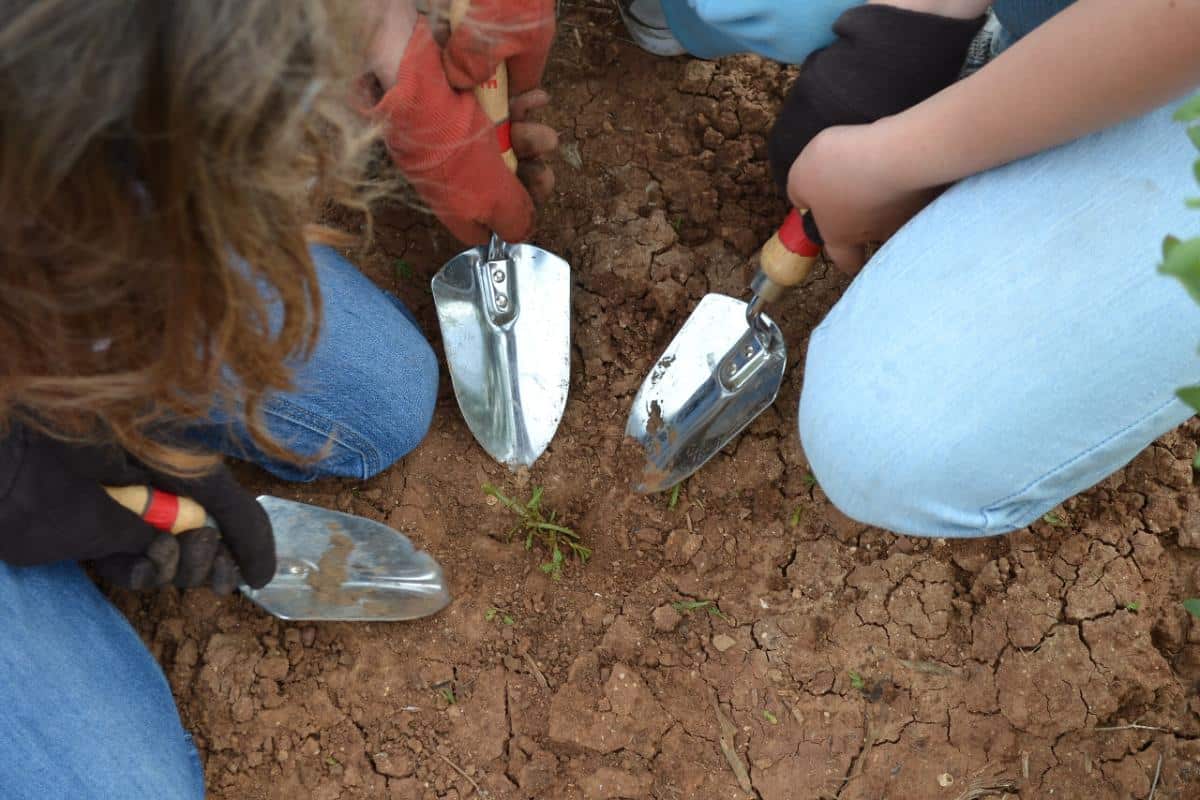
One of the best ways to bring your garden to the next level is to befriend other gardeners. Participate in plant clubs. Join a local plant swap group. Our area libraries have seed exchanges where everybody brings seeds they don’t want or have too much of, and they trade as enthusiastically as kids trading Pokémon cards.
Gardening clubs will lead you to new ideas in the garden through education and through seeing other folks’ gardens. You’ll learn new techniques. You’ll also trade cuttings and plant starts and slips.
Experiment with Plants and Gardening Methods
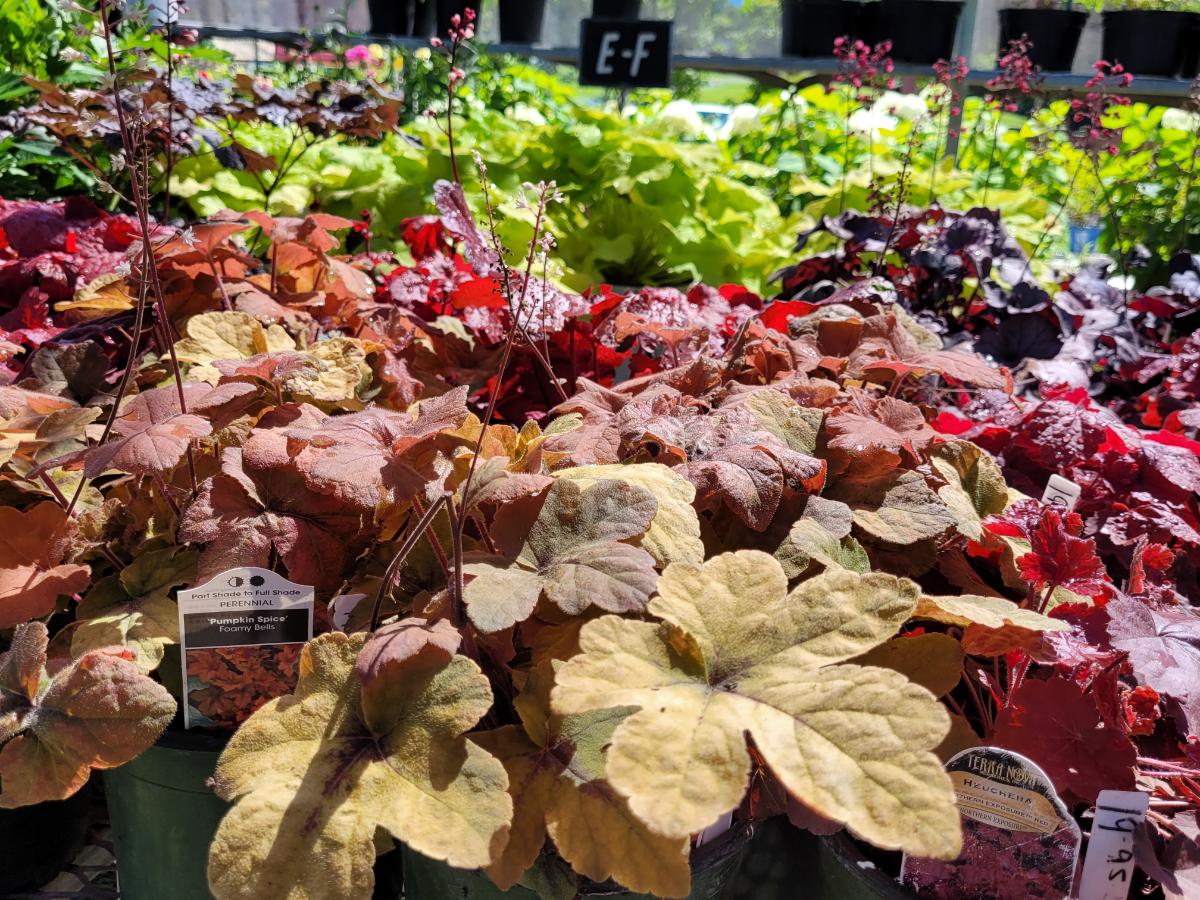
Even if you’re not sure if a plant will be good, try it out anyway. If it turns out to stink, then it’s easy to pull up and give it away. But sometimes, it might turn out to be a real winner, and now you’ve got a new favorite!
Try different gardening methods as well. Try deep mulching, grow a food forest, try vertical gardening. It’s good to step outside your comfort zone. If it doesn’t work, it’s no big deal. But sometimes, a new idea opens up possibilities in your garden in ways you’ve never dreamed of.
Mulch! Mulch!! Mulch!!!
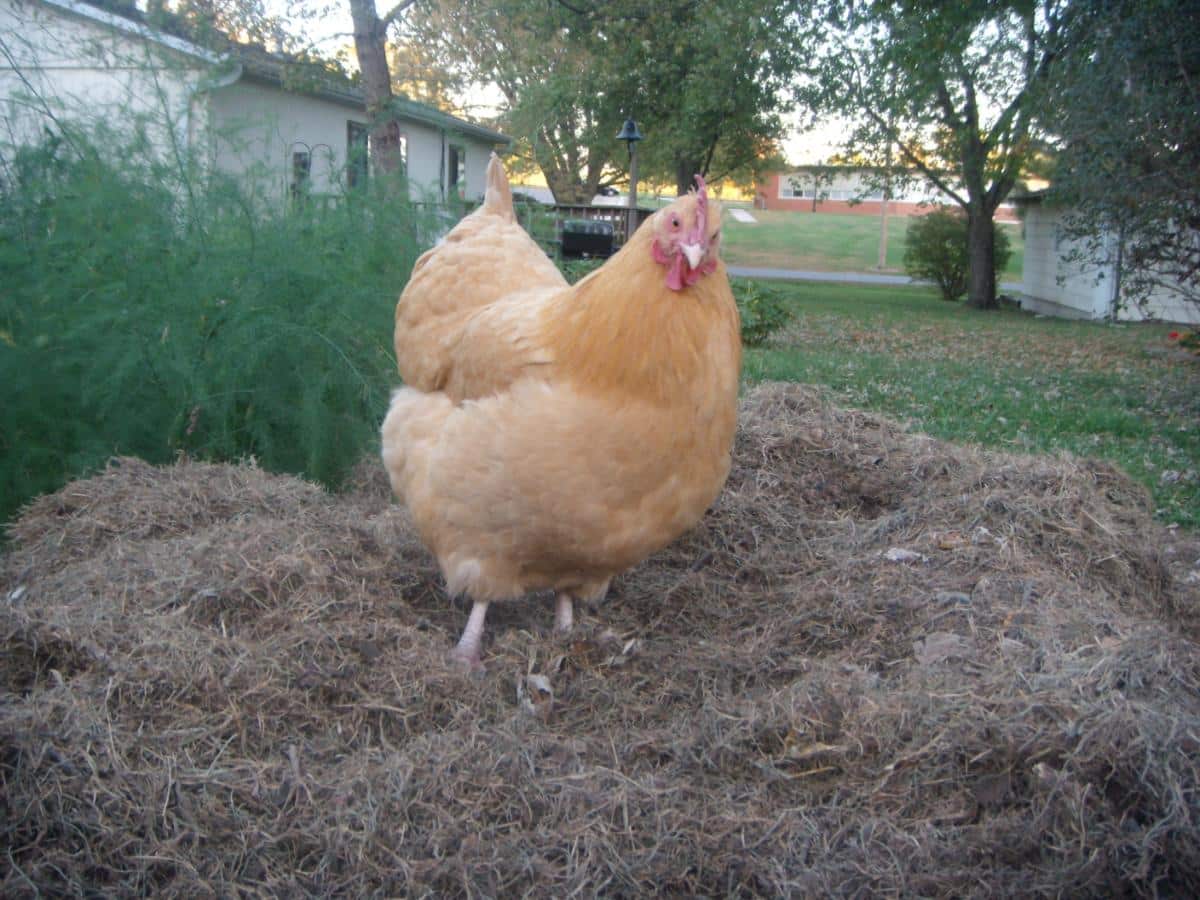
MULCH. This is a sure-fire winner, any way you look at it. Mulch offers such a host of benefits that I never get tired of talking about it.
Make deep mulch beds around your trees (make a donut, not a volcano) as you keep adding mulch. The wood chips break down and make new soil and will need to be renewed. A deep mulch keeps roots cool in summer and protects roots from freezing and thawing in winter. It holds in water.
What’s that? You’re saying that lots of mulch can get pricey? Well, there’s a fix for that …
Get Wood Chips from Local Tree Services
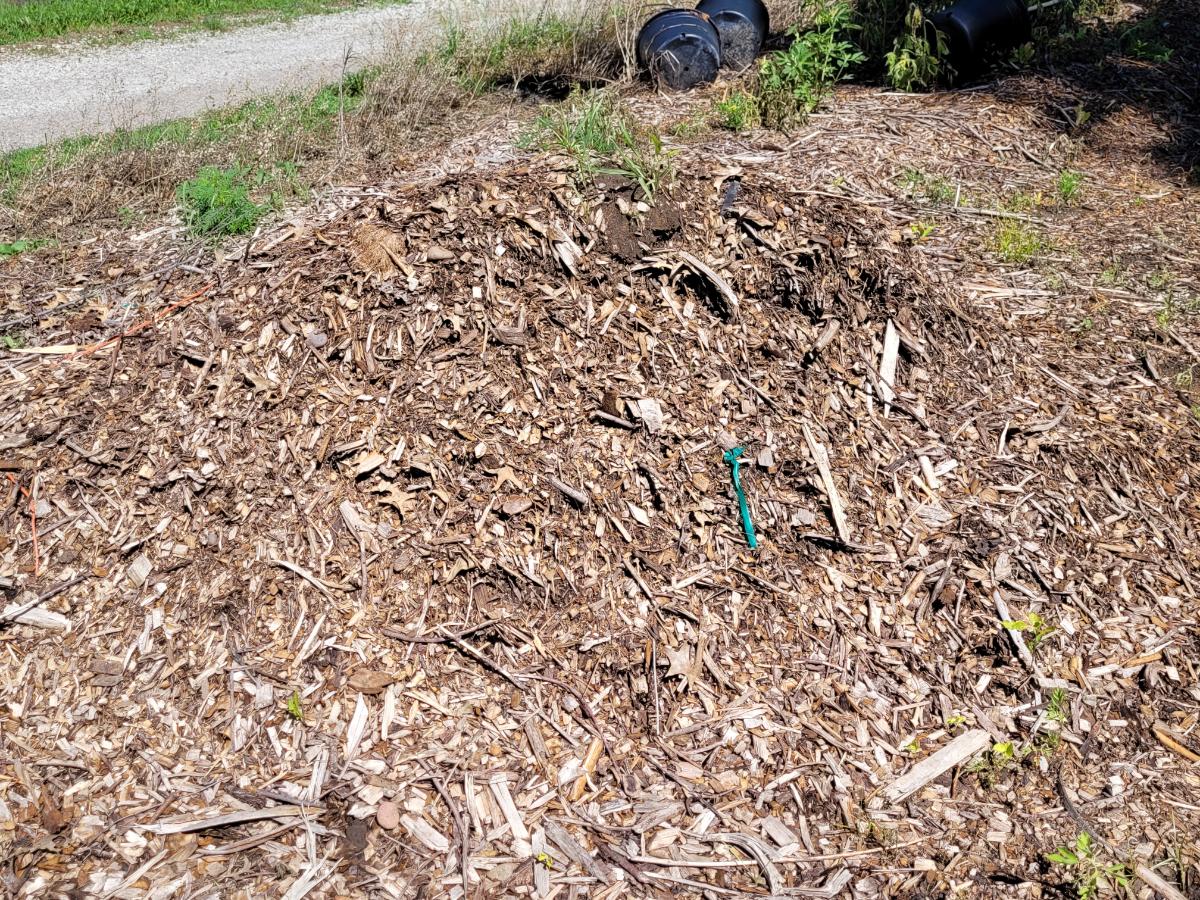
Contact your local arborist or tree services to get a never-ending supply of wood chips for mulch. They can drop off a lot of wood chips – about 25 cubic yards of them (675 cubic feet). That’ll cover a 50x50 area with about six inches of wood chips.
The drawback is that you don’t know when they’ll show up, and they’ll leave a huge pile of chips in your yard that will take some time to whittle down. If you have nosey neighbors or an HOA, you might have to look into other options.
There will be a mixture of trees of all kinds of species in the chips, but that’s okay. Different trees will provide different nutrients and benefits to the soil and, in turn, to your plants.
Let the chips sit for about a week so they start to heat up and break down the green materials before you spread them. Then they won’t heat up in the garden.
A dump truck full of woodchips is a lot cheaper than buying 50 million bags of mulch at a big box store.
Use Mulch and Compost from Landfills or Nurseries
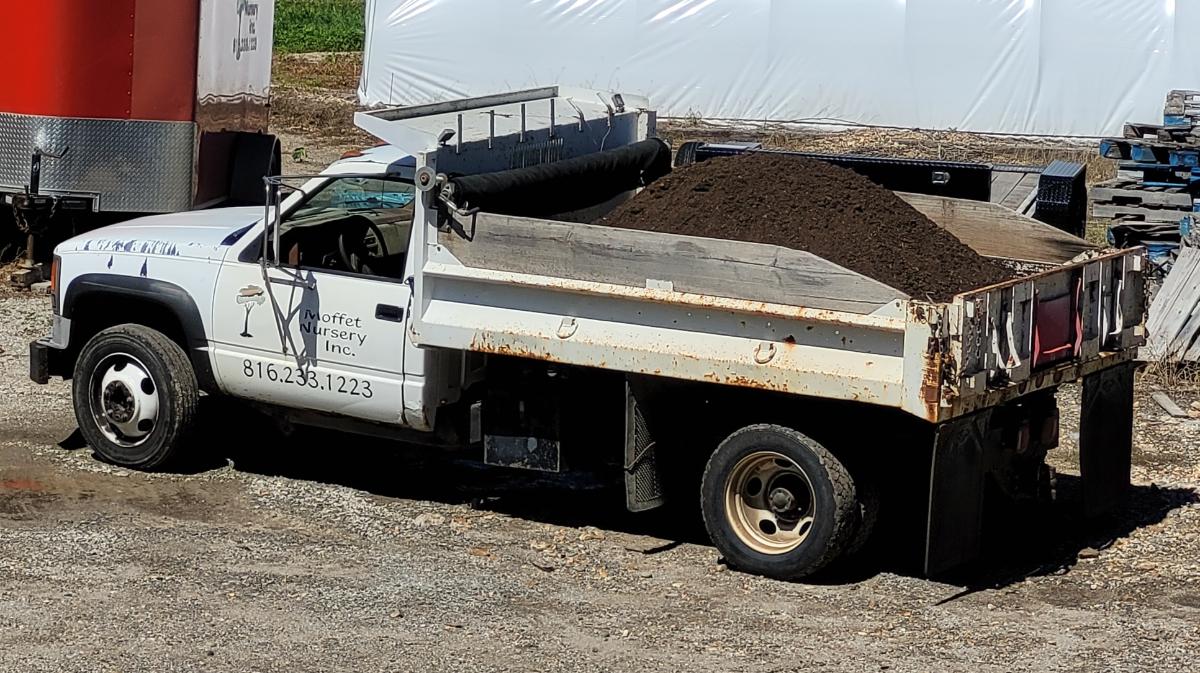
If you have a truck, you can go to your local landfill and get wood chips and compost. The local landfill sends yard waste to a separate part of the landfill, chips it, and leave it in big piles. They use this to cover layers of the landfill. Drive your truck in, and a landfill employee will bring a huge earth mover with a bucket 5 feet deep filled with mulch, and they’ll pour it into your truck bed until your leaf springs are almost flat. Then drive it home, lower the tailgate right over the place where you want the compost or mulch to go, and start scooping it out.
It's a good idea to screen this compost because, at our landfill, there are often bits of black plastic bags in it because they’d send bags of yard waste through the chipper without removing the bags. So be warned.
If this sounds too much, purchase good soil and compost from a local nursery. You’ll pay money, but you won’t have to mess with weird bits, and they’ll bring the compost or mulch straight to your door!
DIY Compost!
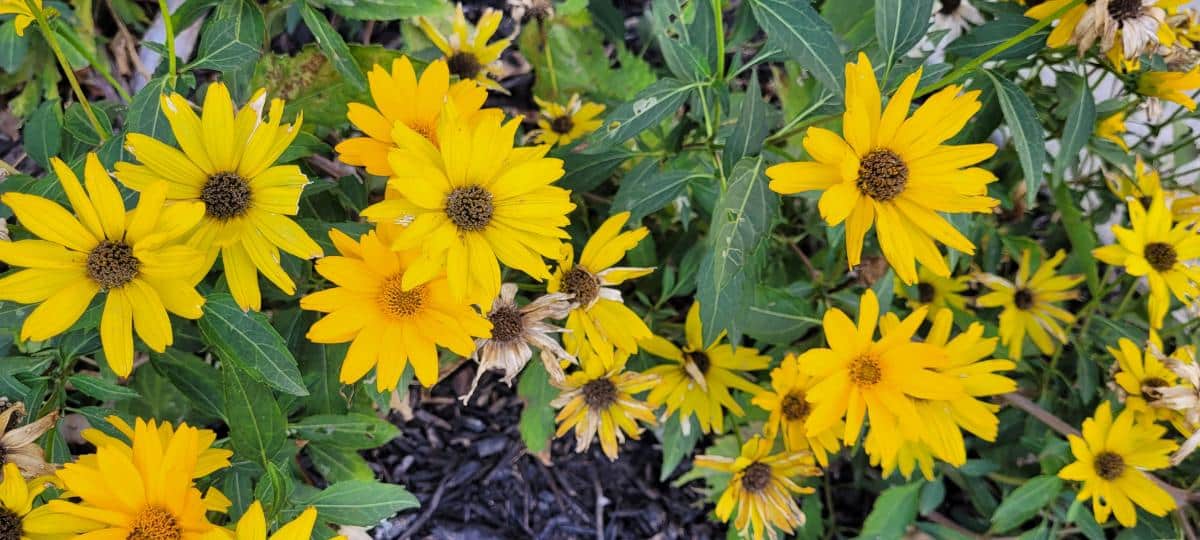
Back in the good old days, Organic Gardening magazine used to run a back-page feature where people sent in pictures of their compost piles. Gardeners get super-obsessed with their compost piles. Some gardeners had some incredible setups, but no wonder – good compost is the lifeblood (lifesoil?) of the garden.
Having a good system for compost – a heap for all the kitchen and yard scraps and another one for finished compost – makes a huge difference in the garden.
Compost piles will also eat your grass clippings (be sure to mix them with “brown” materials such as dead leaves, paper, or cardboard). Shred your tree clippings and add them as well. However, you make it, a steady source of compost will greatly improve the quality of your garden.
Use Deep Mulching to Reset Your Garden
If you have an area with bad soil that you can’t do a thing with, or if your garden soil is depleted, or if you want to smother grass and weeds to start a new garden, cover the area with two feet of wood chips. Have the tree service dump the chips there so they’re easier to spread out.
Use Quality Tools

Invest in good-quality tools. They’re a one-time investment that pays off in the garden through the years. I’ve seen cheap pruners/secaturs come and go, but my Felco pruners that I got in 1995 still work great.
A hori hori is a digging knife that can do so many other things. A skidger is a hori hori on a pole that allows you to take out weeds and grass while standing up.
A broadfork will replace your tiller. It aerates the soil without destroying the soil structure. It pulls up rocks and deep-rooted weeds.
Carry your tools in a 5-gallon bucket so you don’t have to keep trotting back to the garden shed to get whatever you forgot. Carry pruners, scissors, hori hori knife, gloves, folding saw, or whatever tools come most often to hand in your garden.
Set Up a Good Watering System in Your Garden
A watering timer is inexpensive but saves so much watering time.
Use drip tape for an easy to use system, though it will last only a season or two. Drip tubing is more permanent and is buried underground, so it takes a little longer to install. Once it’s in place the irrigation system will keep delivering for years. Both types will save water, labor, and time. In late fall, have somebody blow the water out of the lines.
Rain barrel is a necessity in many areas of the country to save water. In areas with severe watering restrictions, set up a greywater system.
Add an RV water filter to your garden hose. It removes chlorine, and plants really appreciate it.
Add a Small Water Feature for Wildlife
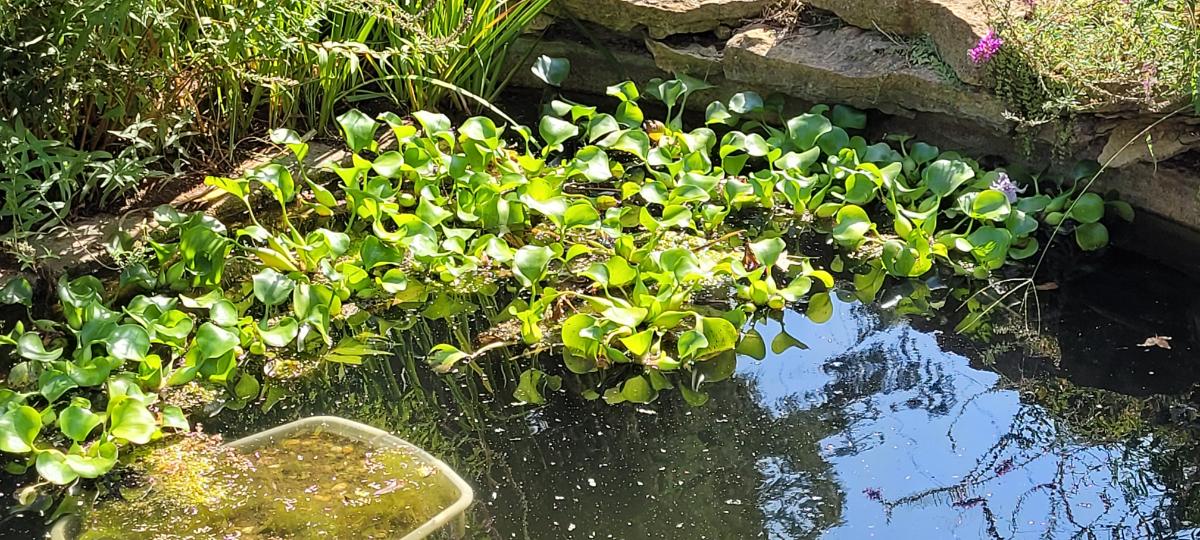
A small water garden will bring in birds, butterflies, pollinators, and frogs. Plants thrive around it, and it’s a peaceful place to spend time. Even something as small as a birdbath will work.
Read All About It
Seek out gardening knowledge. Read books. Listen to podcasts. Watch short videos. (When looking for online videos, make sure the content creators actually grow their own gardens and know what they’re talking about.) Learning how to garden will help you save money, time, and labor and give you more ideas about how to make your space beautiful.
Take Local Classes About Gardening
There are often adult education classes being taught about aspects of gardening at your local trade school or community college that are cheap and will teach you a lot. Folks in the United States can sign up for Master Gardener classes through the local University Extension Center, which is worth every penny. They can also create a community of gardeners to work with (and exchange plants with).
Seek Out Cheap and Free Plants and Supplies

My grandmas and great-grandmas built their gardens almost completely out of free plants. They didn’t have a lot of money laying around, so they started seeds, exchanged starts, took cuttings, and shared with loved ones and other gardeners. There’s no better way to get back to your roots – literally – and it’s an easy way to try out new plants.
Learn about propagation: How To Propagate Hostas By Root Division + Growing Tips For Happy Hostas
Grow Perennials Instead of Annuals
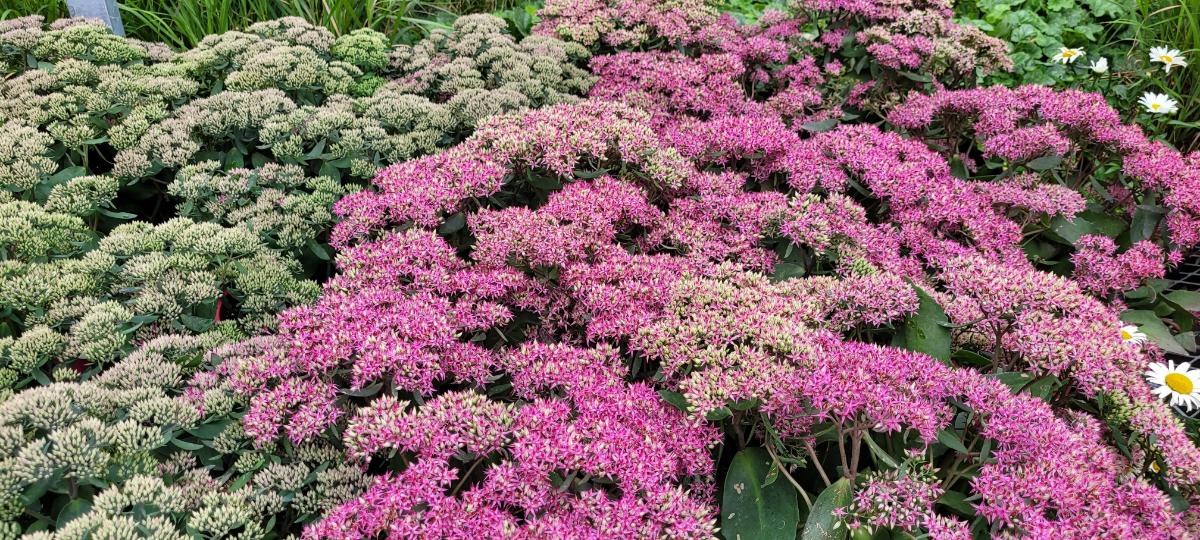
This goes for both the herbaceous perennials as well as small shrubs and trees. Perennials will keep growing year after year, will fill in your garden very nicely, and save money and labor on annuals. Why plant a huge area with annuals every spring? Fill in the backs and centers of the garden with perennials that keep growing year after year, then fill in around the edges with a few annuals.
Start Perennials from Seed
Grow perennials from seed by starting them in pots in spring. By fall, they’ll be big enough to transplant. In spring, they pop up, ready to grow.
Become Skilled in the Ways of Plant Propagation
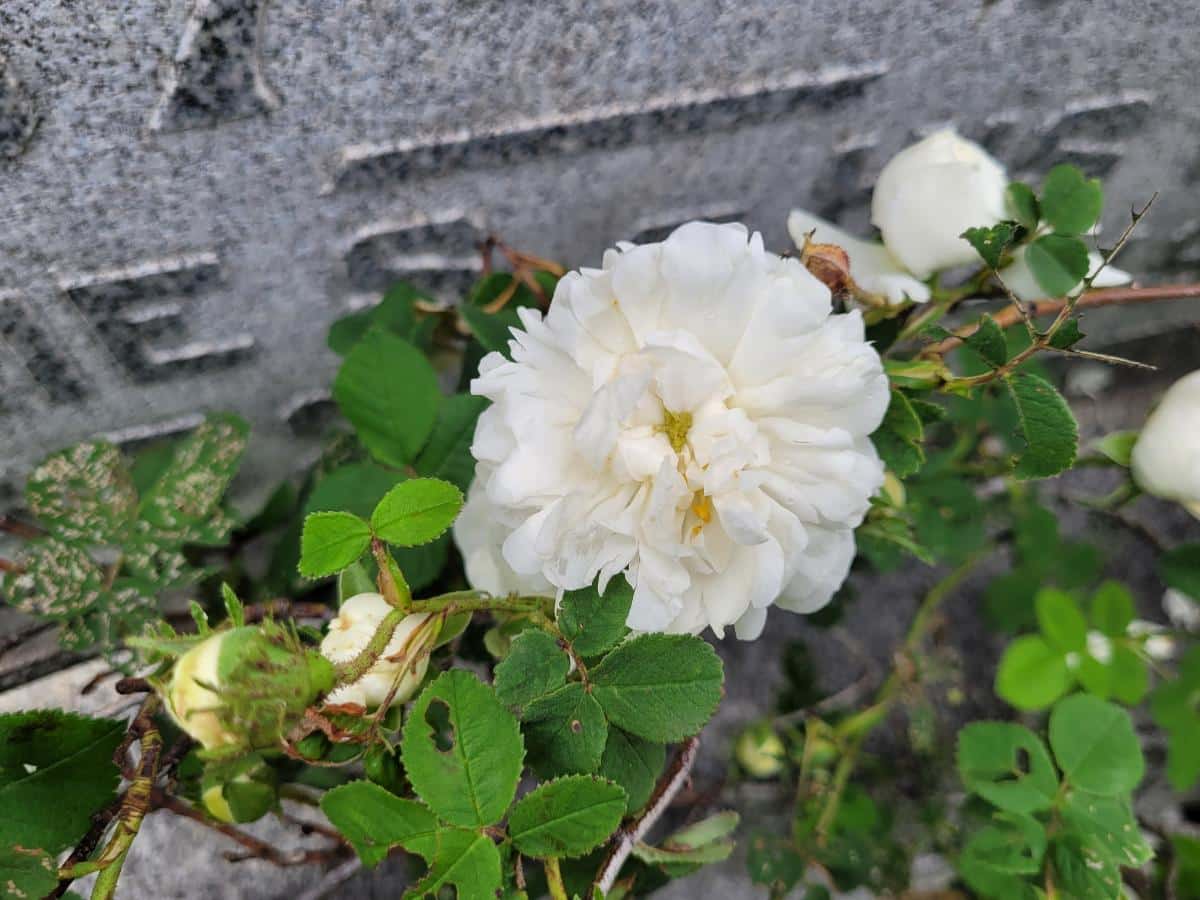
Learning all kinds of different ways to propagate, whether by seeds, layering, cuttings, division, suckers, grafting, and more, yields incredible benefits, opens up a wider variety of plants for your garden, and saves an incredible amount of money.
I’m currently taking cuttings and starts of old roses I’ve found in cemeteries and gotten from friends and family. There are a couple of good ones in there, including a possible Madame Plantier that has small white flowers that smell like lemons.
I’ve rescued some old Gallicas from my home cemetery. I got my g’g’g’grandma’s rose from my aunt, who saved it and many others from around my old hometown. These are roses I would never have otherwise had – and if I’d bought them from the store, they’d cost $15 to $50 each.
Choose Self-Seeding Annuals
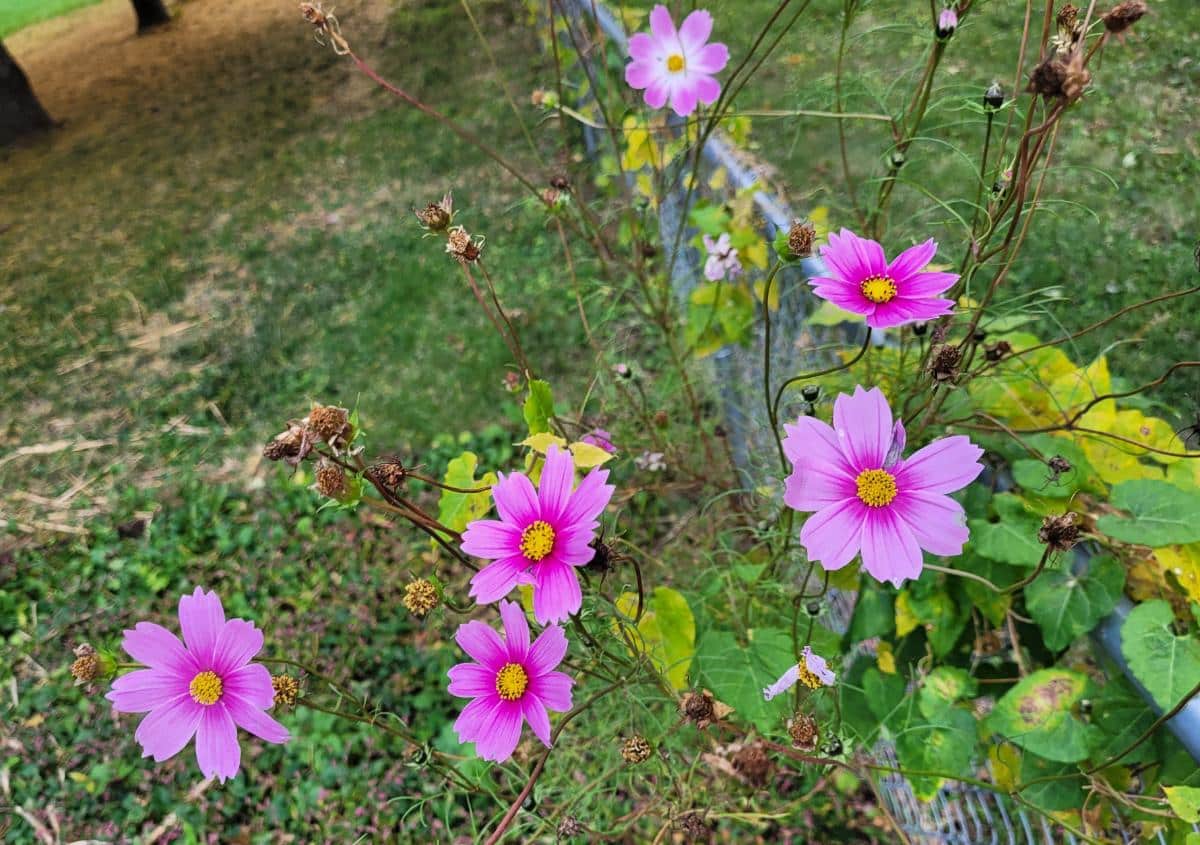
Self-seeding annuals will keep popping up in your garden year after year. Gather your zinnias, cockscombs, cosmos, and other annual seeds every fall and scatter them around the garden. They’ll come up on their own in spring.
Buy Heirloom Seeds
Heirloom seeds are open-pollinated seeds from older plants. Hybrids do not grow true to seed, while heirlooms can be collected and planted, generation after generation. Many heirloom plants have fallen out of commerce, so these suppliers are bringing back old varieties that merchants have dropped from commerce in favor of shiny new hybrids. Heirlooms have a great deal of charm and appeal and are great additions to the garden.
A number of catalogs sell heirloom seeds. You could conceivably buy a packet of seeds and then never buy seeds for that particular plant again by saving the seeds, just as your grandparents and great-grandparents did!
Look for Free Plants and Materials Online
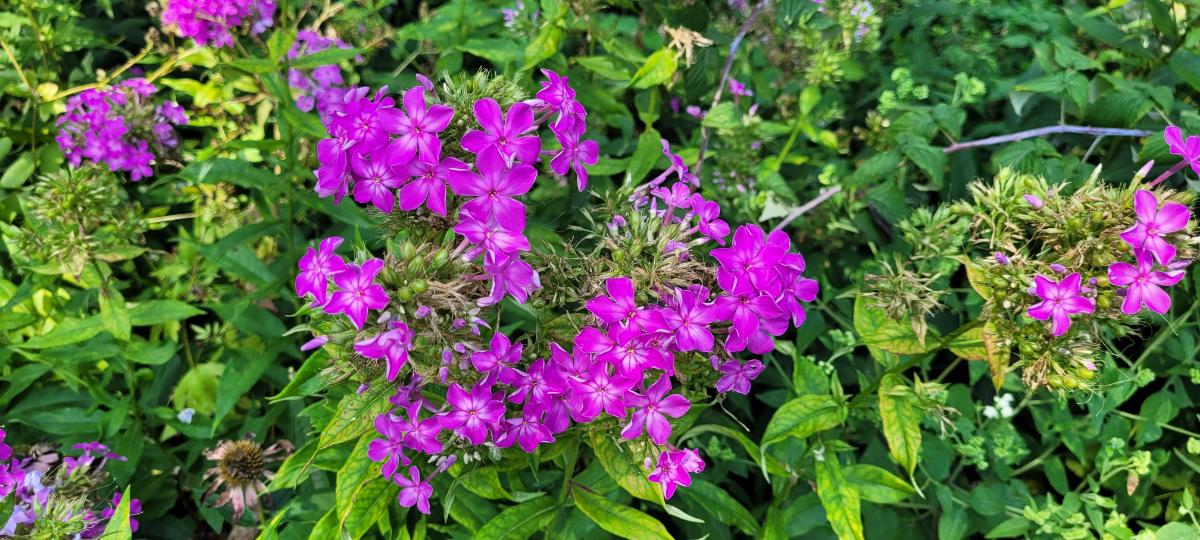
Sharing is caring. Gardeners will advertise on Facebook Marketplace when they have extra plants they’re trying to get rid of. Local Buy Nothing groups are also good.
Look in the “For Sale” section of Craigslist or Nextdoor apps for plants, dirt, paving stones, shrubs, and other gardening things. They’re often cheap or free.
Indoor plants can be shared and propagated. Many houseplant fans find plant bits on the floor at the local box store and ask permission to take them home. It’s actually better to get permission than to ask forgiveness.
Conclusion
Bringing your garden to the next level doesn’t require a lot of money or labor. The opposite is true – and can be a lot more pleasant, while adding surprise and interest.
Read more gardening advice from Rosefiend Cordell.
More articles:

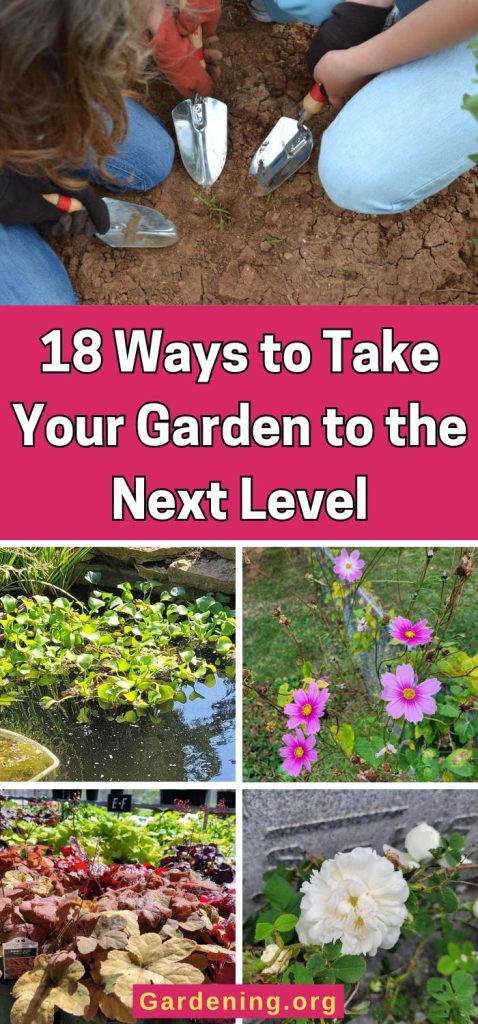
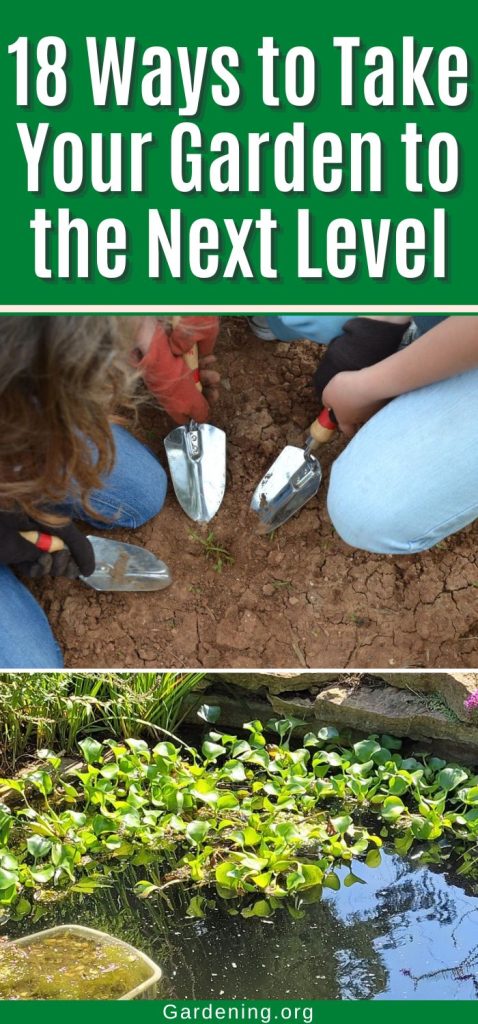
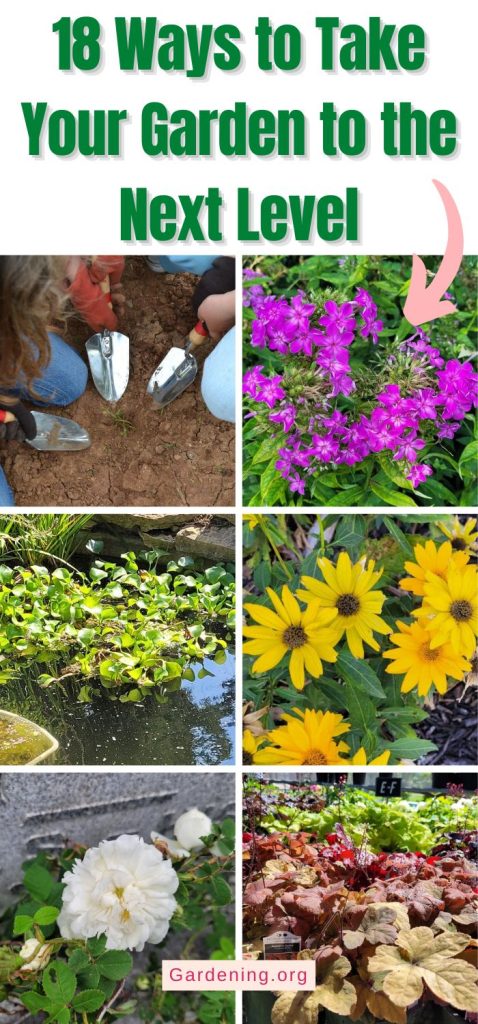
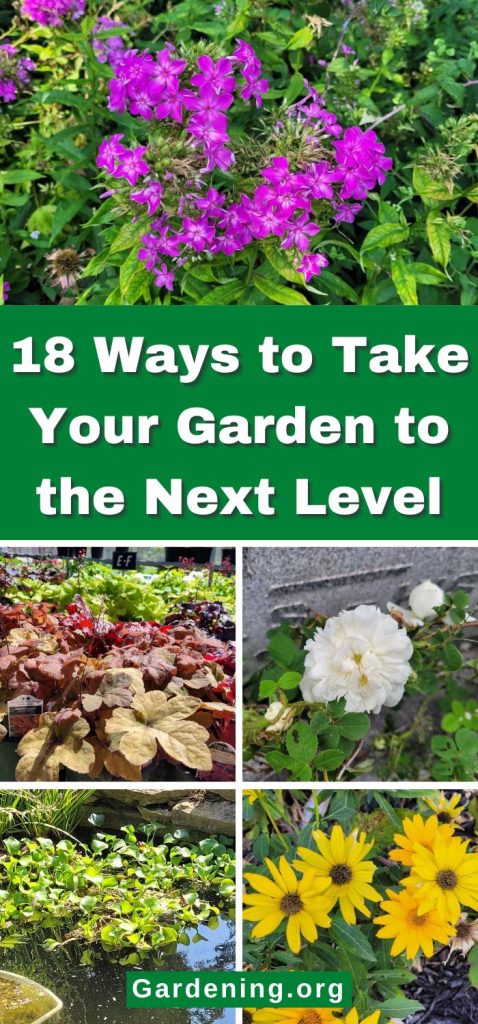




Sue C Carter
I am growing Moonflowers on my two pillars & would like to join them at the top to form an arch to my front door. Any suggestions?
Mary Ward
Give them something to cling to to form the shape you want. It could even be lines of heavy string or twine.